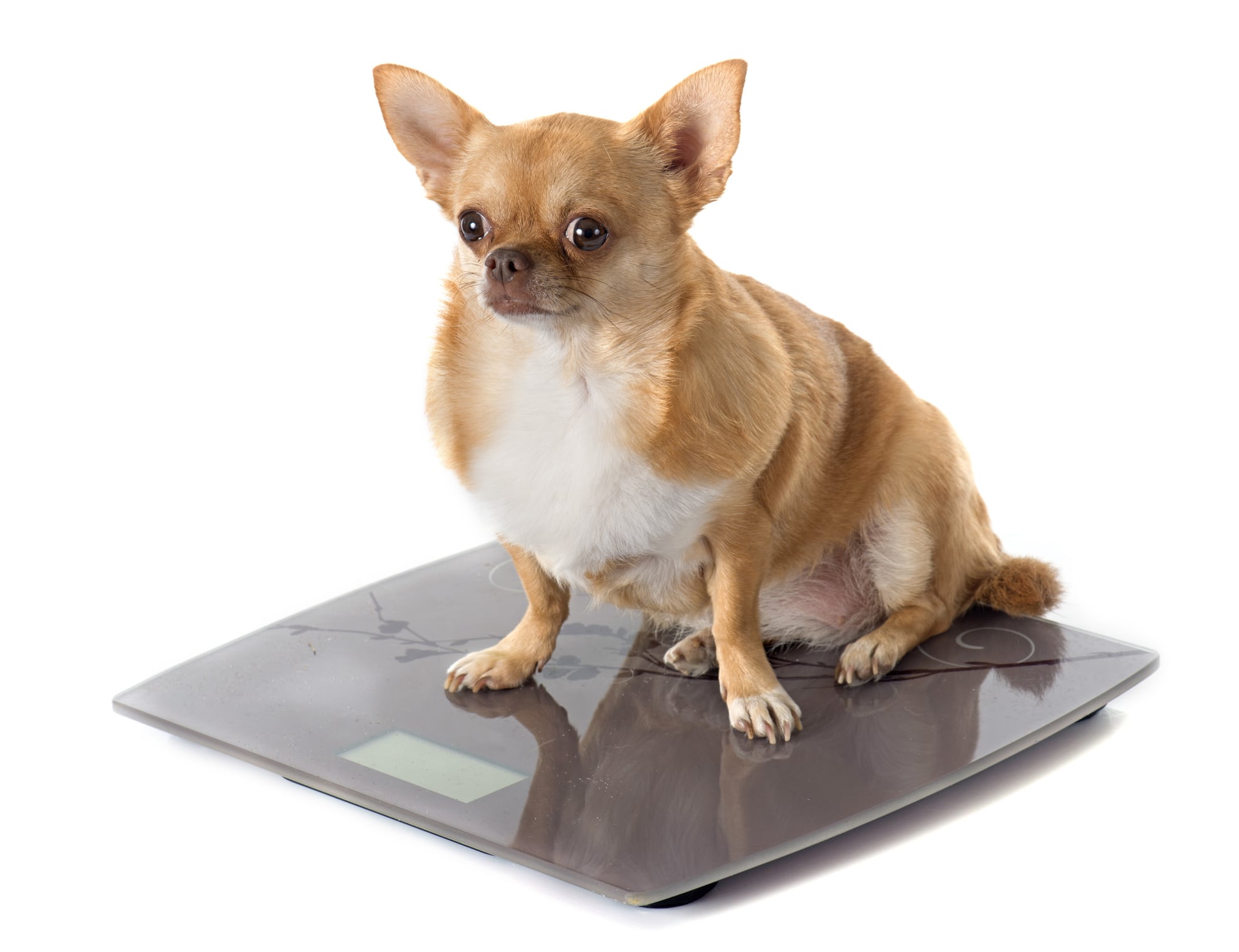Importance of Pet Obesity Awareness Day
October 11th marks Pet Obesity Awareness Day, a crucial reminder for pet owners about the rising concern of overweight pets. This day emphasizes the importance of understanding the risks associated with pet obesity and the steps we can take to ensure our furry friends lead healthy, active lives.
The Growing Concern: Statistics on Pet Obesity
Pet obesity is a mounting concern, and the numbers are there to prove it. According to the Association for Pet Obesity Prevention (APOP), in their most recent survey, approximately 56% of dogs and 60% of cats in the U.S. were classified as overweight or obese. This translates to an estimated 50 million dogs and 56 million cats that are carrying excess weight. These figures are not just numbers; they represent a significant health risk to a vast number of pets across the nation. The escalating rates emphasize the importance of understanding the causes and consequences of pet obesity. By raising awareness and implementing preventive measures, we can work toward reversing this trend and ensuring a healthier lifestyle for our pets.
Causes of Pet Obesity
Understanding the root causes of pet obesity is crucial for prevention and management. While overindulgence and lack of activity are common culprits, there are other factors at play:
- Overfeeding: Many pet owners unintentionally provide their pets with more calories than they need, leading to weight gain.
- Lack of Exercise: A sedentary lifestyle, often due to limited outdoor access or playtime, can contribute to pets packing on pounds.
- Genetic Predisposition: Certain dog breeds, such as Labrador Retrievers, Pugs, and Dachshunds, have a natural tendency to gain weight. In cats, breeds like the British Shorthair and Maine Coon might be more prone to obesity.
- Underlying Medical Conditions: Conditions like hypothyroidism, where the thyroid gland does not produce enough thyroid hormone, can lead to weight gain. This hormone is essential for regulating metabolism. In dogs, hypothyroidism can cause symptoms like lethargy, skin issues, and cold intolerance.
- Age and Neutering/Spaying: Older pets tend to be less active and have slower metabolisms, making them more susceptible to weight gain. Additionally, neutered, or spayed animals might have a higher risk of obesity due to hormonal changes.
Health Risks Associated with Pet Obesity
Our pets are no different than us; obesity presents the same health dangers to them as it does to us. Overweight pets face a higher risk of:
- Diabetes: Excess weight affects insulin’s effectiveness.
- Heart Disease: The cardiovascular system is strained by obesity.
- Joint and Bone Issues: Additional weight stresses joints.
- Respiratory Problems: Fat buildup hinders lung function.
- Shortened Lifespan: Obesity can cut down a pet’s life expectancy.
We all cherish our pets as if they were our children, showering them with love and affection. However, sometimes our way of pampering them, especially with food, can inadvertently harm them. Overindulgence can pave the way for health risks.
How to Tell if Your Pet is Overweight
Recognizing if your pet is carrying extra pounds is the first step toward ensuring their optimal health. Here are signs and methods to determine if your pet might be overweight:
- Rib Check: Gently run your hands along your pet’s side. If you cannot easily feel their ribs, they might have excess fat.
- Waistline Inspection: View your pet from above. Pets with a healthy weight range typically have a noticeable waist between the ribs and hips. If this waistline is absent or hard to distinguish, your pet might be overweight.
- Tummy Test: Look at your pet from the side. Their belly should tuck up towards their hind legs. A sagging stomach can be a sign of extra weight.
- Mobility Issues: Overweight pets often have difficulty moving around. They might struggle to get up, jump, or play as they used to.
- Shortness of Breath: If your pet gets winded easily after minimal activity or play, it could be due to extra weight affecting their stamina.
- Visible Fat Deposits: These can appear on the neck, limbs, and back, especially in severely overweight pets.
- Professional Assessment: Schedule a visit to your veterinarian. They can provide a comprehensive weight assessment and guide you on the ideal weight for your pet’s breed and age.
Tips for Preventing and Managing Pet Obesity
- Portion Control: Always measure your pet’s food to ensure they are getting the right amount.
- Stay Active: Ensure your pet gets consistent exercise suited to their age and breed.
- Limit Treats: Be mindful of the number of treats and avoid feeding them table scraps.
- Regular Check-ups: Keep an eye on their weight and overall body condition, adjusting their diet and activity as needed.
By following these guidelines, we can help our pets maintain a healthy weight and enjoy a longer, happier life.
The Role of Diet in Pet Weight Management
Diet is a cornerstone of pet health, and its significance becomes even more pronounced when addressing weight management. Just as humans have varied dietary needs based on age, activity level, and health, our pets require tailored nutrition plans. Here is a deeper dive into the dietary considerations for pets:
- Life Stage-Specific Diets: Puppies and kittens have different nutritional needs compared to adult or senior animals. For instance, growing pets often require more protein and certain nutrients to support their rapid development. Conversely, senior pets might benefit from diets that support joint health and cognitive function.
- Breed-Specific Nutrition: Different breeds have unique dietary requirements. A Great Dane will have different caloric and nutritional needs than a Chihuahua. Pet food brands offer breed-specific formulas to cater to these nuances.
- Energy Levels and Diet: An active Border Collie that spends hours herding or playing fetch will burn more calories than a laid-back Basset Hound that prefers lounging. It is essential to match your pet’s diet to their energy levels. High-energy breeds might require foods with higher protein content, while less active pets might need a diet with fewer calories to prevent weight gain.
- Consultation with a Veterinarian: It is always a good idea to consult with a veterinarian when considering a diet change. They can provide insights into the best food choices based on your pet’s specific needs, whether it is addressing a weight issue, a breed-specific requirement, or a life stage transition.
Incorporating these considerations into your pet’s dietary plan can make a significant difference in their overall health and weight management. Remember, a balanced diet is one of the best gifts you can give to your furry friend.
The Role of Blood Flow, Inflammation, and the Benefits of Cellular BOOST and Essential OMEGAS
In this section, we will delve into the intricate relationship between obesity, blood flow, and inflammation in pets. Furthermore, we will highlight the advantages of incorporating Cellular BOOST and Essential OMEGAS into their regimen.
Blood Flow:
- Reduced Circulation: Excess fat can impede proper blood circulation, leading to decreased wound healing and increased susceptibility to infections.
- Cardiovascular Strain: The heart must work harder in obese pets, leading to potential conditions like hypertension.
Inflammation:
- Chronic Inflammation: Obesity can result in the production of inflammatory cytokines from fat cells, leading to chronic inflammation. This inflammation is associated with various health issues, from arthritis to cancer.
- Joint Stress: The added weight from obesity stresses the joints, potentially leading to conditions like osteoarthritis.
- Metabolic Changes: Obesity can induce metabolic inflammation, affecting nutrient processing and potentially leading to conditions like insulin resistance.
To combat these obesity-related challenges, introducing supplements like Cellular BOOST can be beneficial. Cellular BOOST is designed to enhance blood circulation, ensuring that every part of your pet’s body receives the nutrients and oxygen it needs. Essential OMEGAS, with its potent anti-inflammatory properties, can help reduce the chronic inflammation often seen in obese pets. Together, these supplements support the overall health and well-being of pets of all ages, acting as a valuable addition to their health regimen.
Importance of Regular Vet Check-ups
Just as humans benefit from regular health check-ups, our pets too require consistent medical attention. Here’s why routine vet visits are crucial, especially concerning weight management and overall well-being:
- Early Detection: Regular check-ups can identify potential health issues before they become severe. Catching problems early often means easier and more effective treatment.
- Weight Monitoring: Veterinarians have the tools and expertise to accurately measure and track your pet’s weight over time. This helps in identifying any sudden weight gain or loss, which could be indicative of underlying health issues.
- Dietary Recommendations: Based on your pet’s age, breed, activity level, and health, vets can suggest appropriate diets. They can recommend specific foods, portion sizes, and feeding schedules tailored to your pet’s needs.
- Exercise Guidance: Not all pets require the same amount of exercise. Vets can advise on the type and duration of activities best suited for your pet, ensuring they get the right amount of physical activity without overexertion.
- Preventive Care: Regular visits allow vets to administer necessary vaccinations, flea and tick treatments, and other preventive measures. This not only keeps your pet healthy but also prevents potential weight-related issues caused by parasites or illnesses.
- Education & Support: Veterinarians are a valuable resource for pet owners. They can educate you on the signs of obesity, its risks, and offer support in weight management strategies.
- Emotional Well-being: Weight issues can sometimes be linked to behavioral or emotional problems. Vets can assess your pet’s mental health and suggest interventions, from environmental changes to potential therapies.
Conclusion: The Path Forward for Pet Health
As we reflect on Pet Obesity Awareness Day, it is crucial to recognize that pet obesity goes beyond mere aesthetics—it is a pressing health issue that can drastically affect our cherished pets’ well-being and lifespan. As guardians of our furry family members, we bear the responsibility to ensure they lead vibrant, healthy lives. Through proactive measures, continuous education, and regular consultations with veterinarians, we can address and prevent the challenges of pet obesity. A healthy pet not only brings joy and laughter to our homes but also creates lasting memories. Let’s pledge to prioritize their health, ensuring they remain our active and joyful companions for years to come.
Q & A
Q: What percent of pets are overweight?
A: Globally, research suggests that approximately 63% of domestic cats and around 59.3% of domestic dogs fall into the overweight or obese category. Such weight issues can lead to various health complications, such as osteoarthritis in dogs and diabetes in cats. Furthermore, evidence indicates that pets with excess weight tend to have a shorter lifespan compared to those with a healthy weight.
Q: What diseases can cause obesity in animals?
A: Certain medical conditions, such as hypothyroidism and Cushing’s disease, can lead to weight gain in animals. Additionally, metabolic disorders and certain medications can also contribute to obesity in pets.
Q: What are some facts about obesity in pets?
A: Obesity in pets is a growing concern, with studies indicating that over half of dogs and cats in many countries are overweight. This condition can lead to various health issues, including diabetes, heart disease, and joint problems. Factors like overfeeding, lack of exercise, and genetic predisposition contribute to pet obesity.
Q: What are the common reasons causing household pets to become overweight?
A: Household pets can become overweight due to several key factors. Overfeeding, especially with high-calorie foods, and lack of physical activity are primary contributors. Additionally, giving them frequent high-calorie treats can add to weight gain. Some pets may also have underlying medical conditions that affect their weight. Furthermore, procedures like neutering or spaying can alter a pet’s metabolism, potentially leading to increased weight. It’s essential to be aware of these factors to ensure our pets maintain a healthy weight.
Dog Specific:
Q: How do I know if my dog is a healthy weight?
A: A dog at a healthy weight will have a visible waist when viewed from above, and you should be able to feel its ribs without pressing hard. On the side, the dog’s belly should tuck up, and there should not be excess fat hanging down.
Q: How can I check my dog’s weight at home?
A: You can use a home scale to check your dog’s weight. First, weigh yourself, then pick up your dog and weigh both of you together. Deduct your own weight from the total to determine the weight of your dog.
For larger dogs that are difficult to lift, you can try one of these:
- Walk-On Scale: Invest in a large walk-on scale designed for pets. These scales are similar to those found in veterinary clinics and can accurately measure the weight of bigger dogs. Place the scale in a familiar location for your dog and use treats or toys to encourage them to step onto it.
- Vet Visit: If you are unable to weigh your large dog at home, consider scheduling a routine check-up at your local veterinarian. Most vet clinics have walk-on scales suitable for dogs of all sizes.
- Pet Stores: Especially larger chains, have walk-on scales available for customers to use. Check with your local pet store to see if this is an option.
Q: How many pounds is overweight for a dog?
A: The ideal weight varies based on the breed, age, and size of the dog. A weight increase of 10-20% above the ideal weight for the breed is considered overweight.
Q: How do overweight dogs act?
A: Overweight dogs may display reduced activity levels, difficulty in moving or walking, shortness of breath, and may tire easily. They might also show signs of joint pain or discomfort.
Cat Specific:
Q: How do I know if my indoor cat is overweight?
A: An overweight indoor cat will have a rounded appearance with no visible waistline. When you touch its sides, you should be able to feel the ribs, but they might be padded with excess fat.
Q: Do indoor cats get overweight?
A: Yes, indoor cats are more prone to becoming overweight compared to outdoor cats due to their sedentary lifestyle, consistent access to food, and lack of opportunities for physical activity.
Q: Is 20 pounds overweight for a cat?
A: While some large breeds of cats can weigh around 20 pounds and be healthy, for many domestic cats, 20 pounds is considered overweight. It is essential to consult with a veterinarian to determine the ideal weight for your specific cat.
Q: How do I know if my cat is the right weight?
A: A cat with a healthy weight will have a slight waist when viewed from above. When you touch its sides, you should be able to feel the ribs without pressing hard, but they should not be visibly protruding. From the side, the cat’s belly should not sag but should have a slight tuck.




